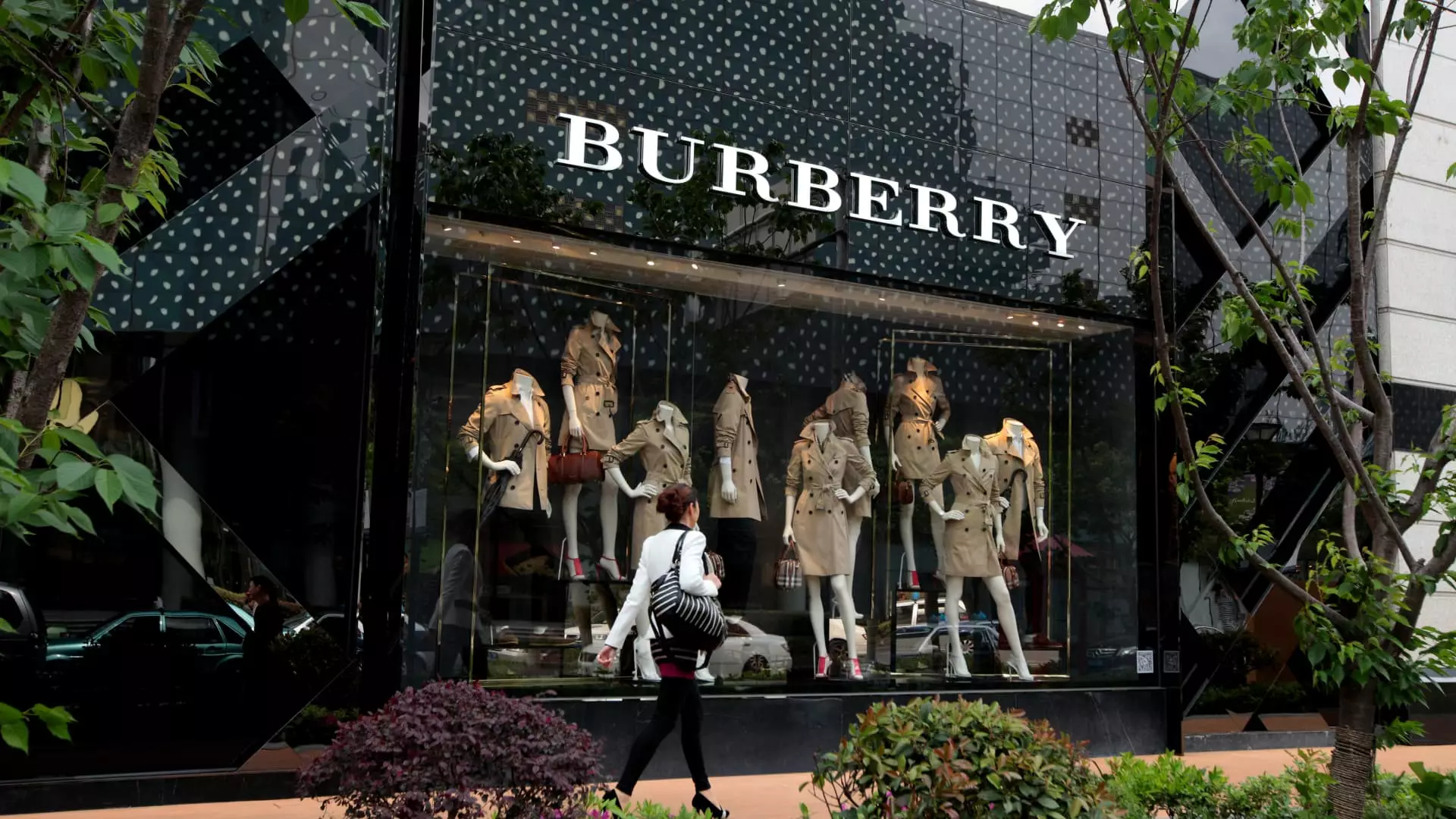In a bold attempt to rejuvenate its brand and reconnect with its consumer base, Burberry has announced a comprehensive realignment of its strategy, dubbed “Burberry Forward.” This initiative is critical as the iconic British luxury fashion house grapples with declining sales and the complexities of a challenging luxury goods market. The focus of this overhaul will primarily be on the brand’s heritage designs and standout pieces, aiming to reignite consumer interest and loyalty.
The unveiling of this plan has sent stock prices soaring, marking a significant financial moment for the company. The brand’s shares saw an unprecedented jump of 22% following the announcement, reflecting investor optimism regarding potential revitalization. Wall Street analysts interpret this strategic pivot led by new CEO Joshua Schulman as a vital opportunity for recovery, especially after a tumultuous performance—notably, a staggering 39% decline in shares year-to-date.
Joshua Schulman’s appointment marks a decisive moment for Burberry, making him the fourth CEO in a decade. Schulman, who previously held a position at Michael Kors, brings valuable experience and a fresh perspective to a company that has struggled to maintain relevance in an increasingly competitive landscape. His acknowledgment that Burberry had drifted from its essential offerings resonates strongly with analysts who have long criticized the brand for veering away from its core identity.
In his announcement, Schulman emphasized that the brand’s previous approaches to product diversification have led to an identity crisis—a loss of focus on quintessential items like coats and scarves, which are at the heart of Burberry’s heritage. This critique of prior strategies identifies a critical problem: the disconnect between the brand’s luxury positioning and consumer expectations.
The timing of Burberry’s strategic realignment coincides with broader challenges within the luxury sector, which is projected to experience a contraction this year. Analysts explain that beyond the external market forces, Burberry’s internal struggles—stemming from a complex legacy of competing strategies—have significantly affected its performance.
Recent financial results have been a stark reminder of these struggles, with reported sales declines of 20% for two consecutive quarters. Experts have indicated that such outcomes necessitate a robust reassessment of product offerings and pricing strategies. Burberry’s renewed focus on heritage items emerges as a potentially rewarding avenue, providing authenticity in a market saturated with fast-fashion imitations.
Consumer Reconnection through Authenticity
The renewed strategic emphasis on heritage and outerwear is anticipated to resonate with consumers seeking authenticity, particularly in an era where brand storytelling plays a pivotal role in purchasing decisions. Analysts suggest that there is an inherent value in returning to the roots of the brand, fostering a sense of nostalgia while appealing to a new generation of shoppers who prioritize sustainability and heritage over fleeting trends.
There is a consensus among industry experts that the future of Burberry will hinge on Schulman’s ability to seamlessly blend business acumen with creative vision. Insights from prominent analysts, like those from RBC Capital Markets and Quilter Cheviot, support the idea that an authentic approach centered around the brand’s foundational offerings could help reclaim market share in a less competitive category.
The Road Ahead: Challenges and Opportunities
As Burberry moves towards implementing this strategic overhaul, there will inevitably be challenges. Aligning the creative vision of the design team with Schulman’s business strategy will be crucial. Maintaining Burberry’s esteemed status as a global luxury brand while making high-impact changes in product design, assortment, pricing architecture, and communication will demand careful navigation.
Moreover, the potential influence of Schulman’s prior experiences may shape the brand’s trajectory. Some speculate that his approach could mirror that of the “British Coach,” a strategy that targets aspirational consumers through increased outlet presence and collaborations with off-price retailers. However, the successful execution of such tactics must maintain the integrity of Burberry’s luxury image.
Burberry’s “Burberry Forward” strategy represents a significant turning point for a brand seeking to redefine its identity and reconnect with its consumer base. By embracing its heritage and prioritizing core products, Burberry aims to navigate the complexities of the luxury market and achieve sustainable growth. Analysts remain hopeful, positing that with a aligned vision and innovative offerings, Burberry has the potential to reclaim its status as a preeminent luxury brand. The path forward is fraught with challenges, but with its historical foundation as a cornerstone, Burberry could indeed herald a new, prosperous era in the luxury fashion landscape.

